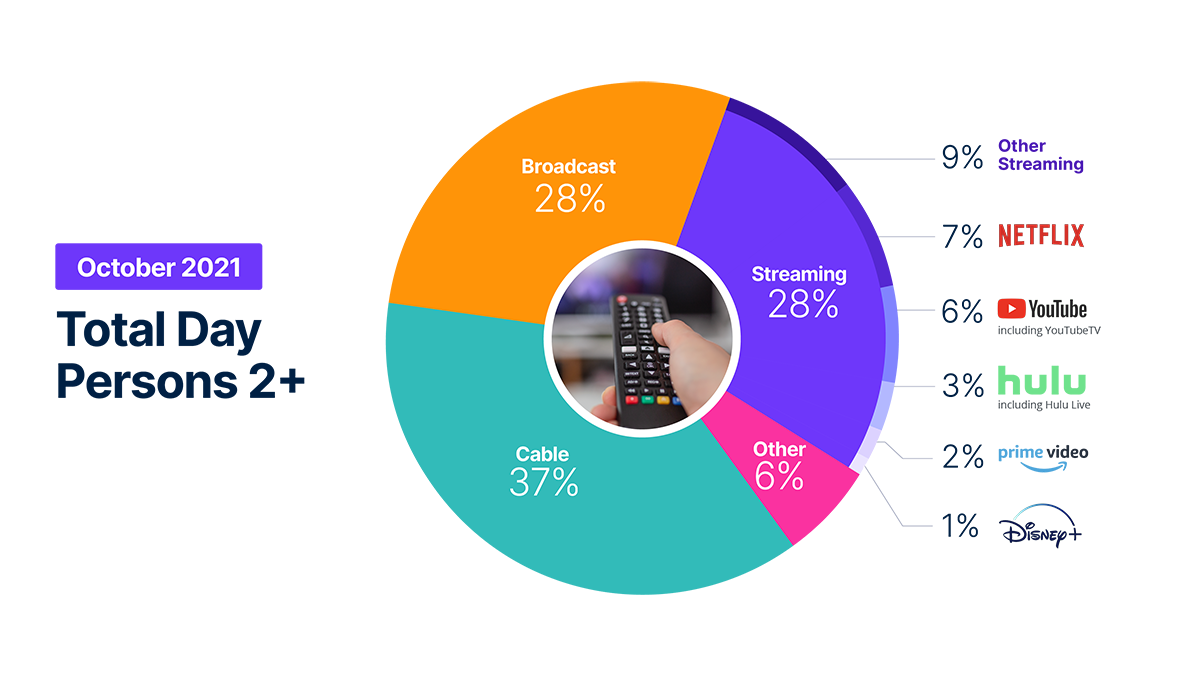Nielsen: Sports, New Dramas Boost Broadcast TV Viewing Share in October
Broadcast’s viewing share rose 2 percentage points to 28%, behind cable (37%) but equal to streaming for the first time in since Nielsen launched The Gauge in May 2021

NEW YORK—Sports and fall season dramas boosted the TV viewing share of broadcast to 28% in October, about the same as streaming (28%), but behind cable (37%), according to Nielsen’s The Gauge.
The improved broadcast share of two percentage points meant that October was the first month since Nielsen launched The Gauge in May when streaming’s share of TV viewing wasn’t larger than broadcast.
The uptick is the second consecutive monthly gain for broadcast, while streaming was flat. Cable and the “other” category lost TV viewing share.
Nielsen said two key genres were responsible for the rise in broadcast viewership: sports, which was up 22% from September, and general drama, which increased a whopping 30% as viewers gravitated to the new programming season, which is now in full swing.
Combined, sports and general drama accounted for 35% of the time viewers spent watching broadcast programming in October, Nielsen reported.
While streaming’s total share of TV remained flat, The Gauge’s data showed that linear streamers (e.g., Charter/Spectrum, DirecTV, SlingTV, etc.), which are included in the “other streaming” category, saw double-digit viewership growth.
Netflix also gained a share point to account for 7% of total viewing, with actual minutes viewed rising 5.5% on the strength of high-profile hits like “Squid Game.”
Get the TV Tech Newsletter
The professional video industry's #1 source for news, trends and product and tech information. Sign up below.
Other streamers remained steady in their share of viewing time, with YouTube at 6% followed by Hulu at 3%, Amazon Prime Video (2%), and Disney+ (1%).
Data from October and earlier months can be accessed at www.nielsen.com/thegauge.

George Winslow is the senior content producer for TV Tech. He has written about the television, media and technology industries for nearly 30 years for such publications as Broadcasting & Cable, Multichannel News and TV Tech. Over the years, he has edited a number of magazines, including Multichannel News International and World Screen, and moderated panels at such major industry events as NAB and MIP TV. He has published two books and dozens of encyclopedia articles on such subjects as the media, New York City history and economics.

